Brescia, Italy's Lioness of Italy Risorgimento Museum reopens, completely renovated
New Risorgimento Museum “Lioness of Italy” opens in Brescia on Sunday, January 29: the inauguration of the refurbished museum, an event signed by the City of Brescia and Fondazione Brescia Musei, marks the opening of the year in which Brescia will be the Italian Capital of Culture 2023. Completely renovated in content, layout and spaces, the Museo del Risorgimento reopens thanks to the essential contribution of Regione Lombardia and Fondazione Cariplo.
The new Museum will be characterized by a strongly narrative approach, oriented toward the understanding of historical events and the development of historical thought, with the aim of reading and interpreting contemporary issues from knowledge of the past. The rediscovery of history is, in fact, an essential tool for preserving memory, enhancing our cultural heritage, analyzing the present and developing a critical sense with respect to current events.
Three are the pillars of the narrative plot of the new Museum of the Risorgimento “Lioness of Italy”: the historical artifacts, that is, the evidence of the material culture of the Risorgimento; the works of art, which have contributed to forming our imagination about the Risorgimento epic; and finally, the digital collection, which allows an experiential approach to the Museum, involving the public in a path of knowledge and exploration. In fact, preserving and explaining objects and works of art is not the only purpose of the Brescia Museum, which is making itself the bearer of a new conception of the Risorgimento as a longer and more complex era than we are used to thinking. In the new exhibit, the Italian Risorgimento is read as an integral part of broader historical phenomena that affected the entire European continent and whose symbolic power did not end in the 19th century. Telling the story of the Risorgimento as a complex journey made up of many voices, the museum alternates local and European scales, narrative and analysis, physical content and digital collections, with the aim of illustrating events, places and protagonists of Risorgimento history in an innovative way. The museum itinerary also recognizes and enhances the fundamental role played by women in the process of Italy’s unification.
The narrative starts from the Brescian Republic of 1797, passing through the Wars of Independence and arriving at the threshold of our days. A special focus is reserved for the episode of the Ten Days, which earned the city the appellation, made famous by Aleardo Aleardi and Giosuè Carducci, of “Lioness of Italy,” because of the heroic popular resistance to Austrian forces (1849).
The Leonessa d’Italia expands and completes the museum offerings of Fondazione Brescia Musei, from an artistic and iconographic point of view, enriching the picture of Brescian painting already in the Pinacoteca Tosio Martinengo, which covers thetime span from the 14th to the 19th century, with works by 19th- and 20th-century artists such as Angelo Inganni, Jean Adolphe Beaucé, Adolfo Wildt, Giovanni Battista Gigola, Caroline Deby, Eliseo Sala, and Faustino Joli. From a historical point of view, the Museo del Risorgimento Leonessa d’Italia is, in fact, flanked, also in its location inside the Castle, by the Museo delle Armi Luigi Marzoli, which tells the story of Brescia’s very long and prolific arms-making tradition over the centuries. Both museums are, not surprisingly, visitable with a single ticket.
The new museum has an inseparable bond with Brescia Castle: during the 19th century the fortress-one of the most fascinating fortified complexes in Italy and the second largest in Europe-was home to the French garrison and then to the Austrian garrison, which decided to re-functionalize the buildings and military quartering, giving the castle the shape of a large barracks. Even in the following century and until the end of World War II, it was a place of detention and torture until it became, starting after the war, one of the places dearest to the people of Brescia. Over the years, it also housed the old Brescia Risorgimento Museum, established in 1887, among the first to be created in Italy. It was closed in 2005 to make way for temporary exhibitions. Serious static problems, which became apparent in the Great Mile building, led to a final closure of the exhibition spaces in 2015, finally healed today by the opening of the new Leonessa d’Italia museum.
The intervention of the Municipality of Brescia and Fondazione Brescia Musei, thanks to Fondazione Cariplo’s Bando Emblematici Maggiori (Major Emblematic Call for Proposals), therefore aimed to recover and enhance a fundamental historical asset in the history of the city of Brescia. The redevelopment project involved not only the structure of the Great Mile - a building that originated as a storeroom for the castle’s provisions and then became, in contemporary times, an exhibition space - but also that of the Small Mile, another ancient storeroom that today becomes the seat of thereception, ticket office and bookshop; it contains inside it a space for workshops and lectures and, on the second floor, one for temporary exhibitions and appointments, and finally, the whole area will serve in the future the Fossa Viscontea outside, a stage for live events.
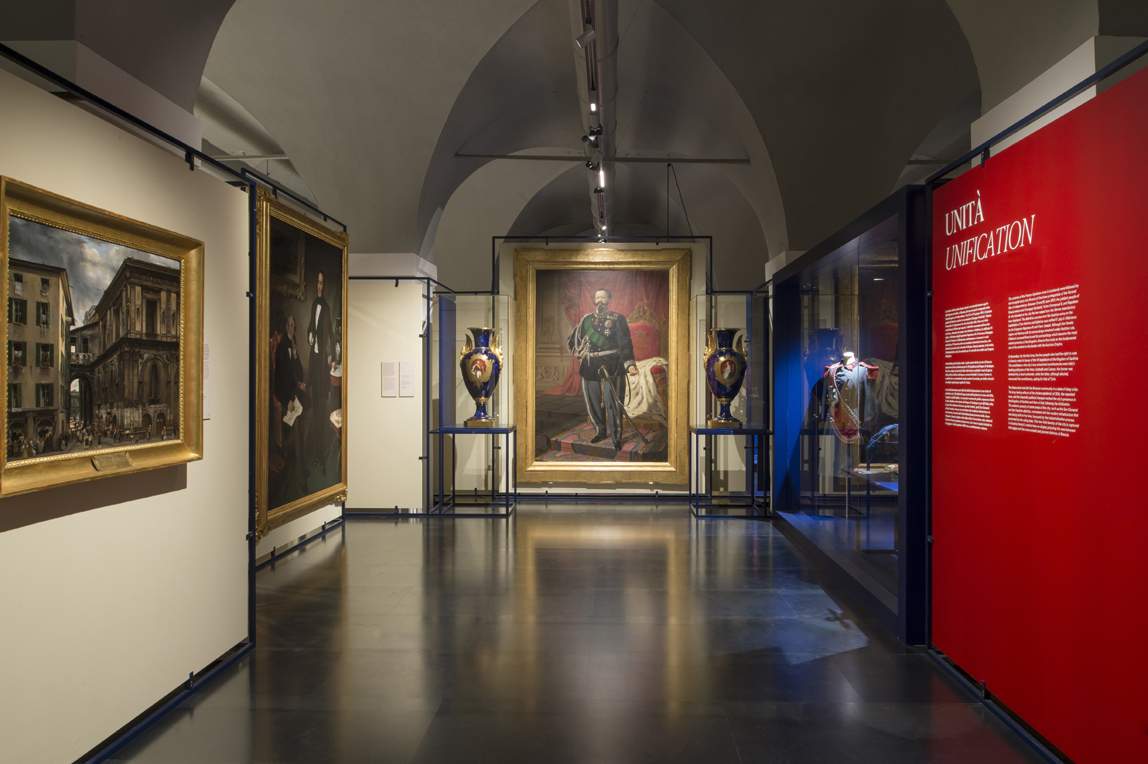
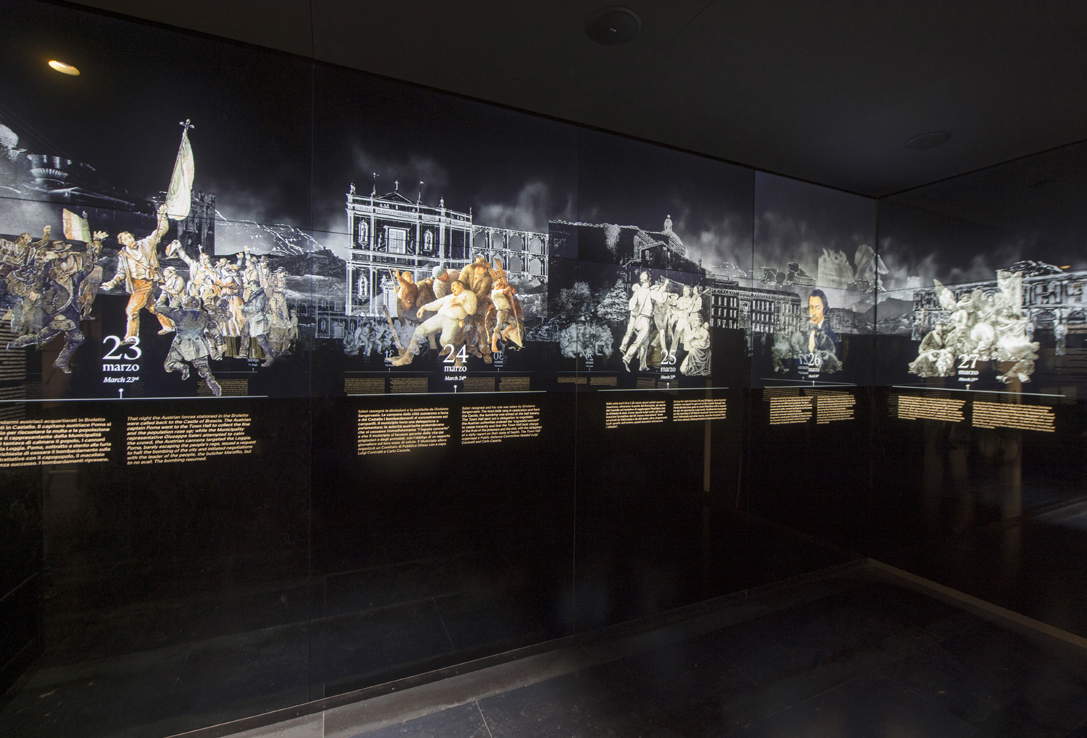
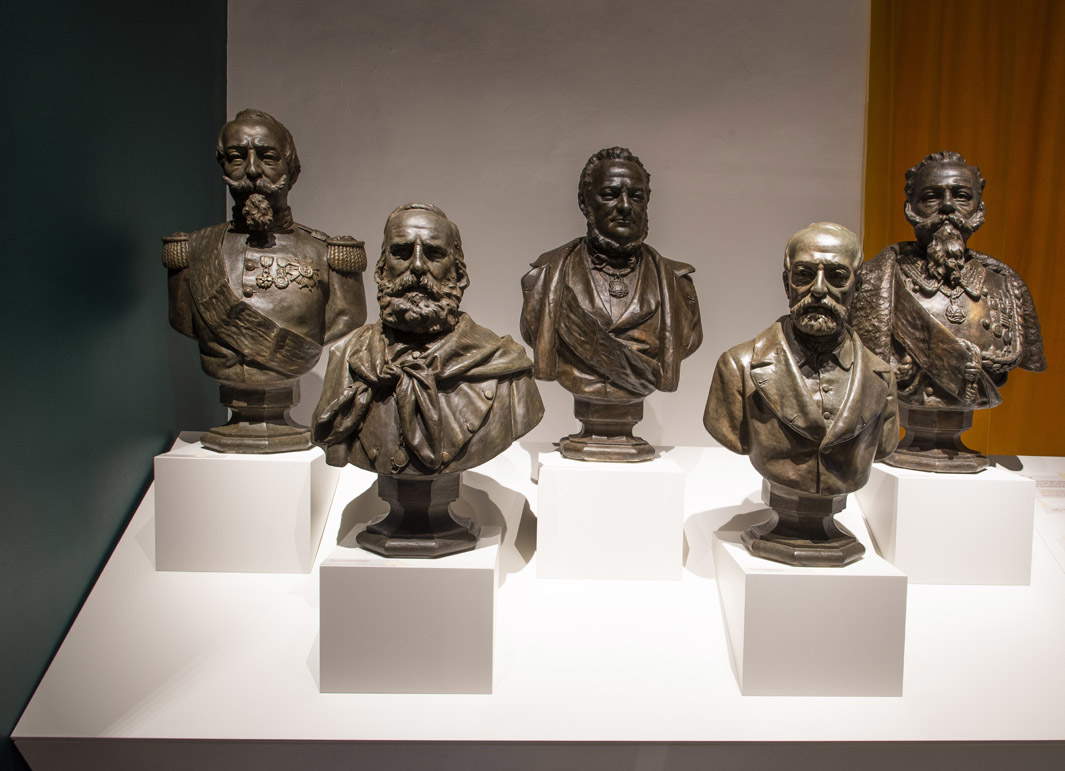
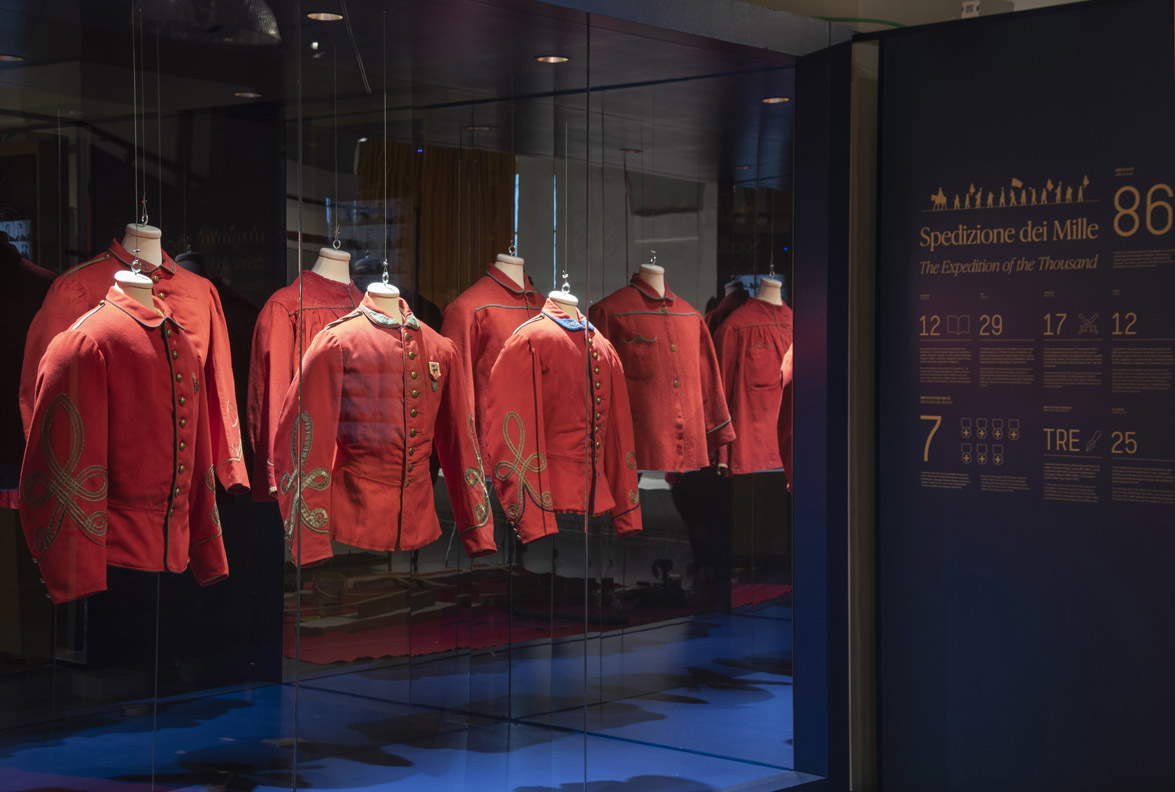
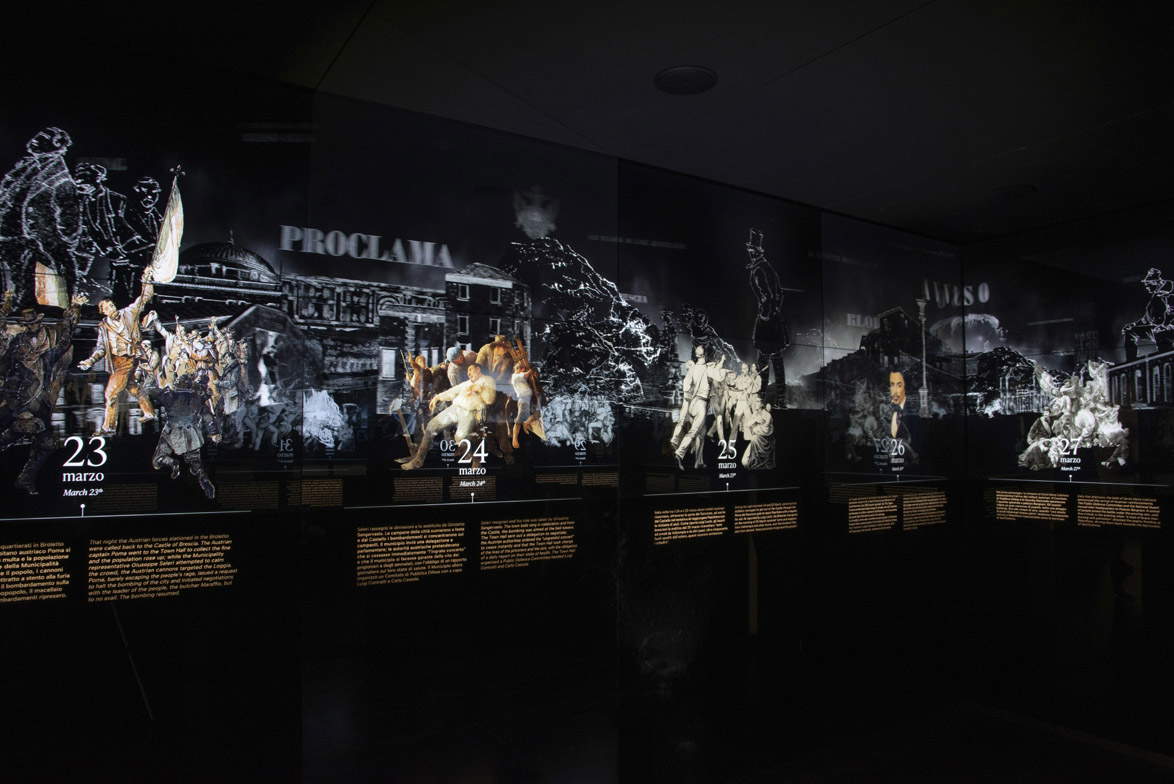
The museum’s itinerary
The Museum preserves and enhances a substantial part of its heritage dedicated to the history of the Risorgimento, which is mainly the result of donations that citizens have destined to the Civici Musei since the end of the 19th century. Memorabilia, objects, paintings, memorials and sculptures have thus sedimented over the course of more than a century, characterizing the Museum’s collecting history in a peculiar way. Compared to the twentieth-century displays, that of the new Museum includes a selection of the most significant pieces, among which new acquisitions also stand out, such as the large painting made by Jean Adolphe Beaucé General Niel on the Medole field of 1861. In compliance with its mandate, Fondazione Brescia Musei has restored most of these works, thus ensuring their optimal legibility and enhancing their aesthetic qualities as well as their documentary relevance.
The new multimedia apparatus, on the other hand, were created not only to complement the narrative, but also to provide educational and informative tools designed specifically for audiences of all ages. Not only adults and history enthusiasts, but also children, families and schools will be able, thanks to interactive consoles, to delve into exhibits and documents of the period in a multimedia way. The digital component is treated as a true collection, possessing the same aesthetic, scientific and narrative dignity as the physical objects, and is composed of rotating collections of images that serve to expand the historical narrative; musical tracks, activated through proximity sensors in specific areas of the Museum, that act as soundscapes and stimulate thelearning of the contents; a Historical Atlas of the Risorgimento, an educational support aimed at reconstructing the historical events that since the 18th century have led to the current European geopolitical configuration; and finally, 6 multimedia installations, located in different parts of the route, and dedicated to: Risorgimenti (a video installation explaining the key concepts of the eight sections of which the Museum is composed); Il “salotto” (a re-enactment of the literary and political salons of the early nineteenth century); Le Dieci giornate di Brescia (an immersive box in which the emotions of the ten days that made Brescia famous are relived); I garibaldini bresciani (an interactive screen to learn about the history of the Brescian participants in the Expedition of the Thousand); Odonomastica (a totem displaying the toponymy dedicated in Italy to the protagonists and most famous events of the Risorgimento); I principi fondamentali della Costituzione italiana (a display on which the fundamental principles of the Constitution of the Italian Republic run in repetition).
Finally, among the digital tools scattered throughout the sections of the new Museum of the Risorgimento “Lioness of Italy,” there will be the Rehearsals of the Risorgimento activated by picking up a cornet, in which important documents and literary texts of the Risorgimento are interpreted by actors from the School of the Piccolo Teatro in Milan, in a theater workshop led by Maria Paiato, Daniele Squassina and Gioele Dix (curated by CTB - Centro Teatrale Bresciano).
The museum is divided into eight sections that, in addition to tracing chronologically the main events of the Risorgimento, use in succession eight key concepts: Revolution; Dissent; Insurrection; War; Unity; Participation; Myth; Legacy.
The first section of the itinerary, Revolution, traces the brief but significant experience of the Brescian Republic, proclaimed in March 1797, which ended Brescia’s centuries-long subservience to Venice. The life of the small republic, inspired by the values of the French Revolution, came to an end in November of the same year, when it peacefully became part of the Cisalpine Republic. Paintings, artifacts and digital apparatuses trace all the stages of the political and cultural transition of Brescia and its urban fabric, in which the Venetian emblems disappeared, replaced by revolutionary symbols. Among these, the most famous was the Tree of Liberty, erected in Piazza della Loggia to replace the Marcian column. A central position in the section is devoted to the figure of Napoleon, whose portrait by Andrea Appiani is visible in the itinerary.
The itinerary continues with Dissent, a section devoted to the political life of Brescia under the domination Austria. While large sections of the population were in favor of the new Habsburg government, there were many who expressed their dissent and attempted to oppose the new political order. It fell in the first place to the Carboneria, in 1820-21 and then in 1830, to lead the first revolutionary uprisings with democratic, republican and independenceist overtones. The section-through objects, memorabilia and paintings-tells the story of Brescian patriots who paid for their political commitment with prison, exile or even death. The symbolic painting in this section is the portrait of Camillo Ugoni by French painter Caroline Deby. The failure of the Carbonari uprisings opened the way for new means of struggle, which resorted to propaganda and force of arms, just as Giuseppe Mazzini’s “Giovine Italia” did, a tricolor of which is displayed in this section.
The new methods of rebellion bore their first fruits in the season known as the "People’s Spring," or the two-year period of insurrections that involved all of Europe between 1848 and 1849. The third section, Insurrection, recounts the famous Ten Days of Brescia (March 23-April 1, 1849) through paintings, clothing, everyday accessories and military uniforms. Visitors can relive the ten days in an immersive box, which interweaves the iconographic production with narratives of individual events of some of the protagonists, among whom the well-known patriot Tito Speri excels. Accompanying the narrative are paintings by Faustino Joli that immortalize the salient episodes of the popular battle against Austrian rule.
The fourth section, War, recounts the long trail of anti-Habsburg conflicts and uprisings from 1848-1859, culminating in the first two Wars of Independence, which affected the whole of Lombardy-Veneto, including the territory of Brescia. Massive in Brescia was the presence of foreign military corps, such as the Zouaves, depicted in Angelo Inganni’s painting displayed in the fourth section. Brescia, at this stage, became above all a “great hospital” for the wounded of each side. In this context, women, among whom patriot Felicita Bevilacqua and her mother Carolina Santi stood out, played a primary role in assisting the wounded. On display in the section are two surgical iron boxes and a thank-you album, signed by the Piedmontese women, as a sign of gratitude to the Brescian women for providing aid to their sons and husbands. Also on display will be the monumental canvas (233 x 484 cm) by Jean Adolphe Beaucé dedicated to the Battle of San Martino and Solferino, a gift from Napoleon III to Marshal Niel acquired in 2021 by Fondazione Brescia Musei.
In the fifth section of the itinerary, Unity, dedicated to the annexation of Brescia to the Kingdom of Sardinia, a time when the city was the easternmost point of the kingdom, stands the portrait that Cesare Campini made of King Victor Emmanuel II, who arrived in Brescia in June 1859 with Garibaldi and Napoleon III. Next to it are vases from the Sèvres manufactory, given by Napoleon III to the city of Brescia in exchange for a copy of Winged Victory. At the same time, the section gives an account of the difficult social conditions that Brescia experienced at the height of the 19th century: Faustino Pernici’s view, which immortalizes the liminal space between the Loggia and the nearby miserable and overcrowded neighborhoods, shows a previously unseen part of the great municipal palace and the “sorrowful city.”
Participation is the key-word of the sixth section, dedicated toGaribaldi’s epic and the 86 Brescians who participated in the Expedition of the Thousand. A Garibaldi flag is preserved in the section, along with photographs of the protagonists, collected in a digital exhibit. Giuseppe Garibaldi’s charismatic personality is represented by the memorabilia, objects and “relics” that his admirers collected during his lifetime, including pins, plates, cups, bottles, pipes, cutlery handles, buttons, handkerchiefs, printed portraits and biographies. Also contributing to Garibaldi’s mythography was the figure of Anita, who died in 1849 during Garibaldi’s escape from Rome, and is depicted here dying in Pietro Bouvier’s painting.
The penultimate section of the museum itinerary, titled Myth, gives an account of the process of monumentalization and mythicization of the Risorgimento after the Unification. In this temperament, for example, the first national exhibition on the Risorgimento was organized in Turin in 1884, with objects from all over Italy, including Brescia. It was on the basis of these materials that the city’s Risorgimento Museum was established three years later. In the liberal age, Brescia underwent a profound urban transformation, supported by politician Giuseppe Zanardelli, Prime Minister from 1901 to 1903 and a great promoter of the 1904 EXPO, which was based in the Castle. The section aims to restore the complexity of Zanardelli’s figure and this phase of great economic and social changes, represented by Domenico Ghidoni’s statue of Emigrants .
The eighth and final section of the museum, entitled Legacy, displays, among others, a bust of Mussolini by sculptor Adolfo Wildt and the flag of the 122nd Garibaldi Brigade, two symbols that speak of the continuity of patriotic discourse, inspired by the Risorgimento, in the twentieth century. Closing the section, and thus the Museum, is an in-depth look at the Italian Constitution, flanked by the medals Brescia received for its merits in the Risorgimento and the Resistance.
In the Museo Leonessa d’Italia it will be possible to use the Visiting App, created by Fondazione Brescia Musei. In fact, the visit entitled Le Dieci Giornate: dalle barricate alla memoria (The Ten Days: from barricades to memory ) continues in the urban fabric, thanks to a walking tour that will offer an unprecedented perspective on urban public spaces, enhancing epigraphs, views and monuments related to the museum narrative and the Risorgimento.
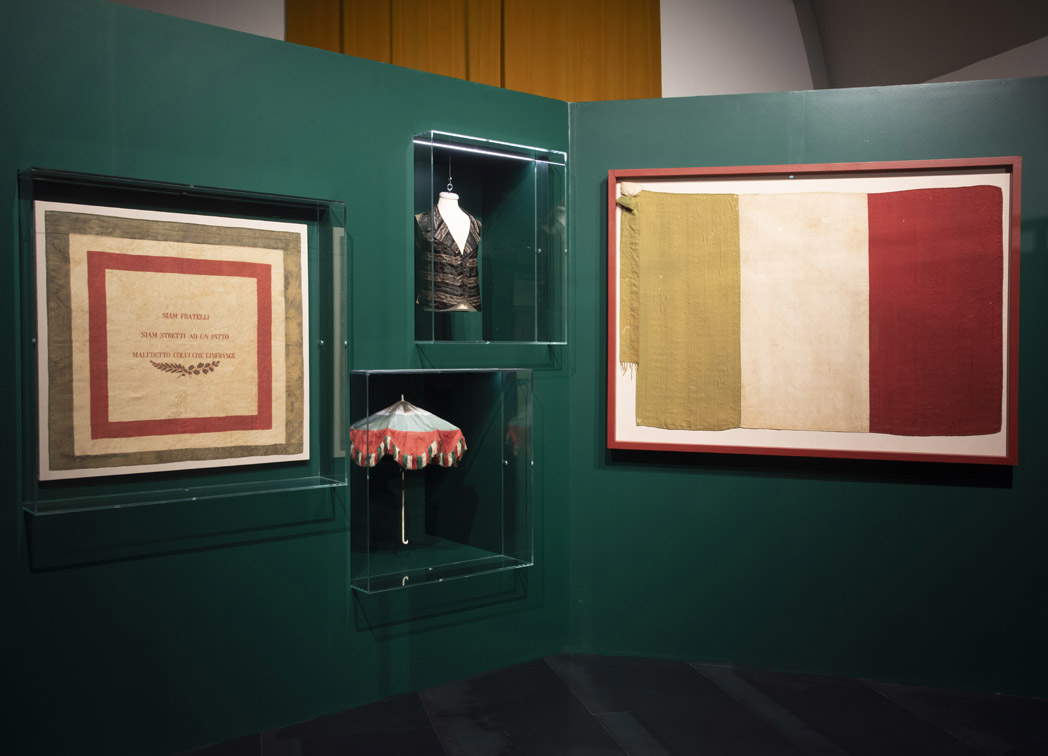
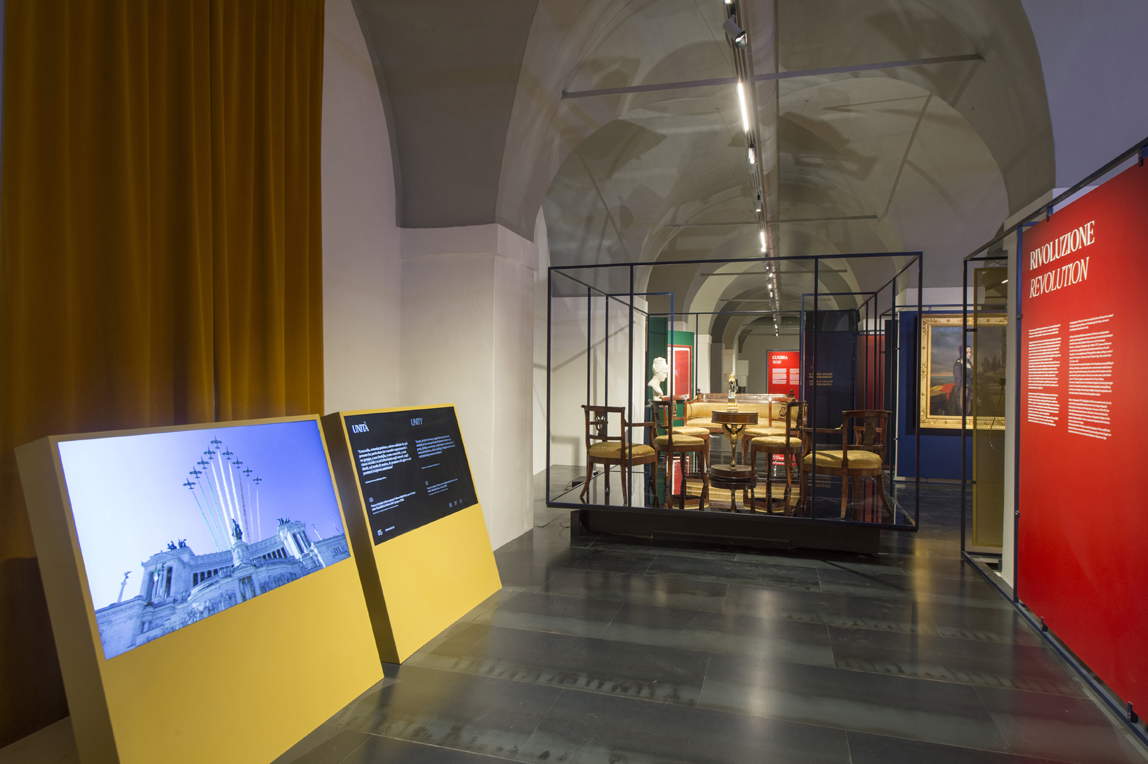

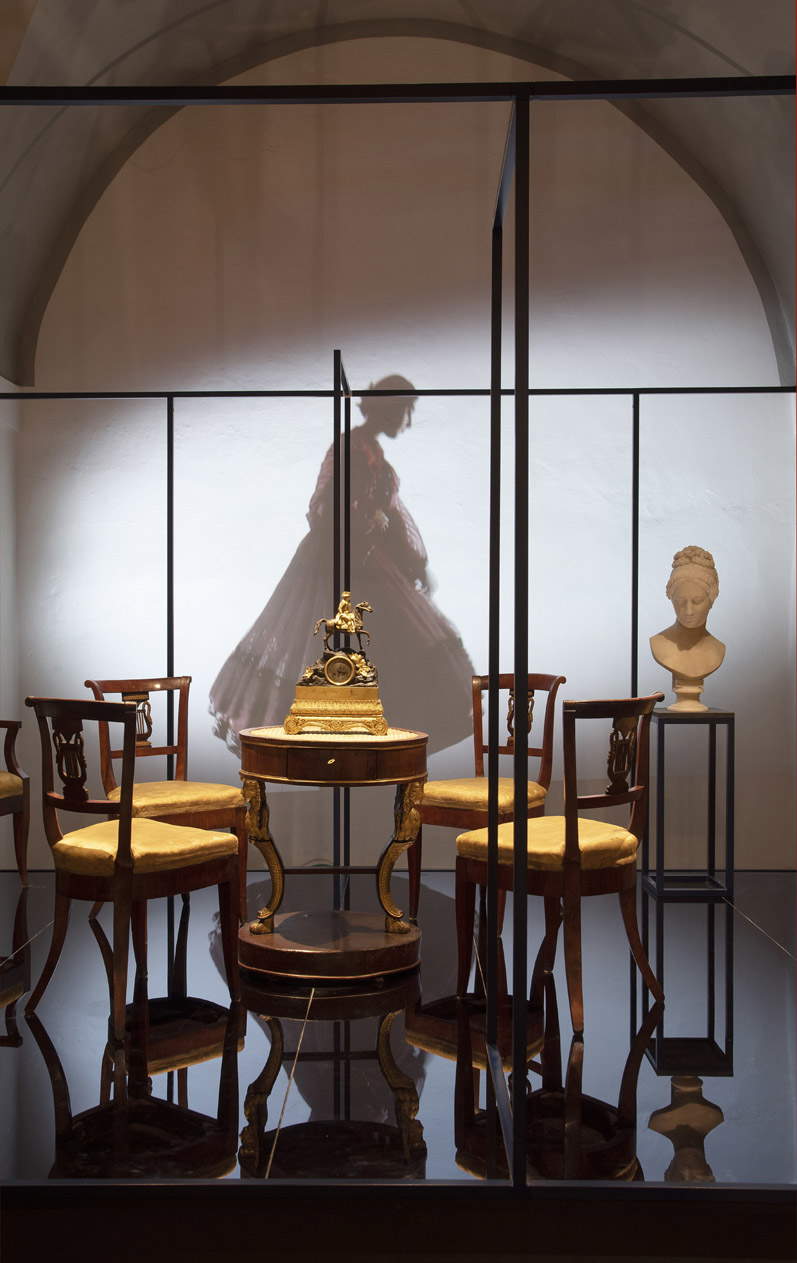
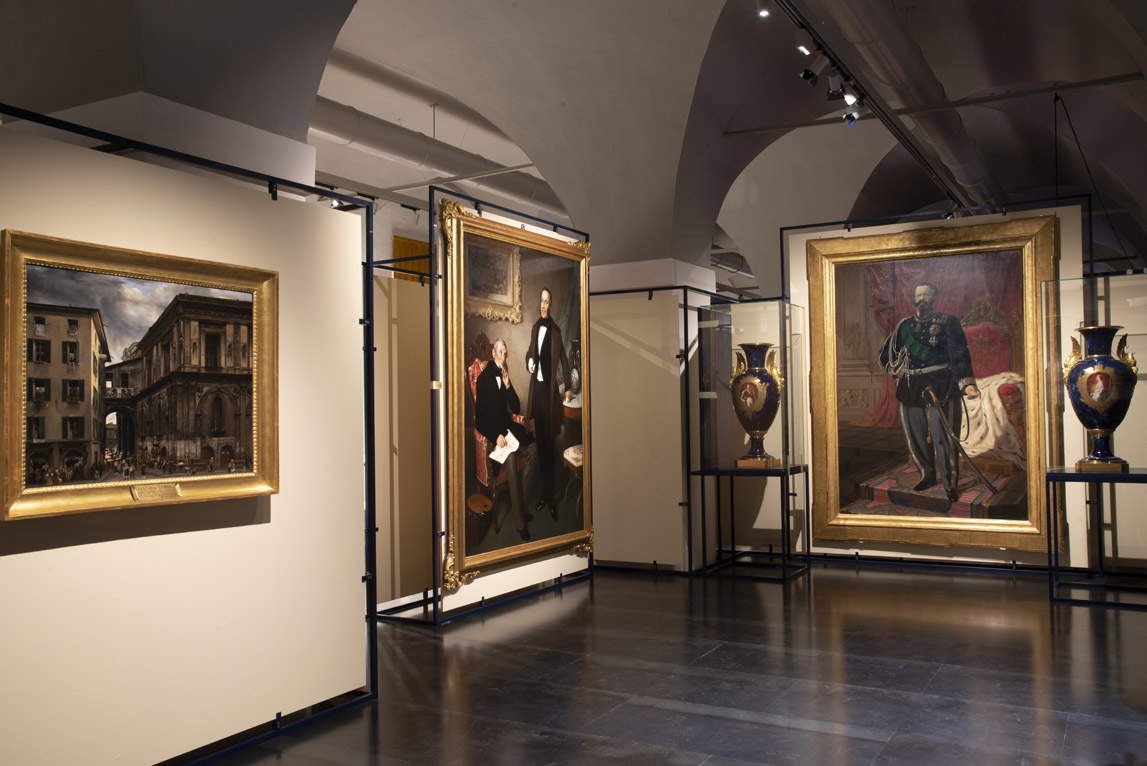
Statements.
“There are many reasons for the extraordinary nature of this new museum,” says Francesca Bazoli, president of Fondazione Brescia Musei. "We could recall the great strength of the masterpieces by 19th- and 20th-century artists that have been collected here, transforming it into a small second civic art gallery in the city, or the multimedia exhibits that enrich the narrative without weighing it down and without becoming invasive with respect to the narrative, or the antirhetorical guise of a museum that becomes contemporary, thanks to the artistic narration of the actors who interpret the founding texts of the Italian Risorgimento. Or finally, the very strong link with contemporaneity that gives this museum the attributes of a museum that speaks of the present before the past. But more than anything else what we care about is that this achievement completes the encyclopedic historical narrative that the civic museums managed by the Brescia Musei Foundation offer to citizens and guests. The Museo del Risorgimento Leonessa d’Italia with the ideal continuation of the narrative, which in Santa Giulia ends with the Venetian age, brings us up to the present. For us who manage and enhance this heritage, today is also a celebration because it coincides with the recovery of a fundamental season of the city’s culture that we protect."
"The Lioness of Italy," says Stefano Karadjov, director of the Brescia Musei Foundation, “will be a great new contemporary museum, a museum that enhances the history of Brescia’s contribution to the Italian Risorgimento, but at the same time a museum that speaks of the entire European nineteenth century and that tackles for the first time, in an anti-rhetorical and not strictly celebratory way, a founding moment of our contemporary culture. Great history painting, with masterpieces never exhibited before, historical memorabilia, interactive exhibits with a modern approach to datatelling and infographics that fits perfectly and new audiences, and finally dramatizations by actors from the Piccolo Teatro di Milano and students from the Ronconi school. A unique project a great museum for itself and a very important new lever to enhance our Brescian heritage that completes the encyclopedic narrative of the art and culture of this city.”
 |
| Brescia, Italy's Lioness of Italy Risorgimento Museum reopens, completely renovated |
Warning: the translation into English of the original Italian article was created using automatic tools. We undertake to review all articles, but we do not guarantee the total absence of inaccuracies in the translation due to the program. You can find the original by clicking on the ITA button. If you find any mistake,please contact us.





























